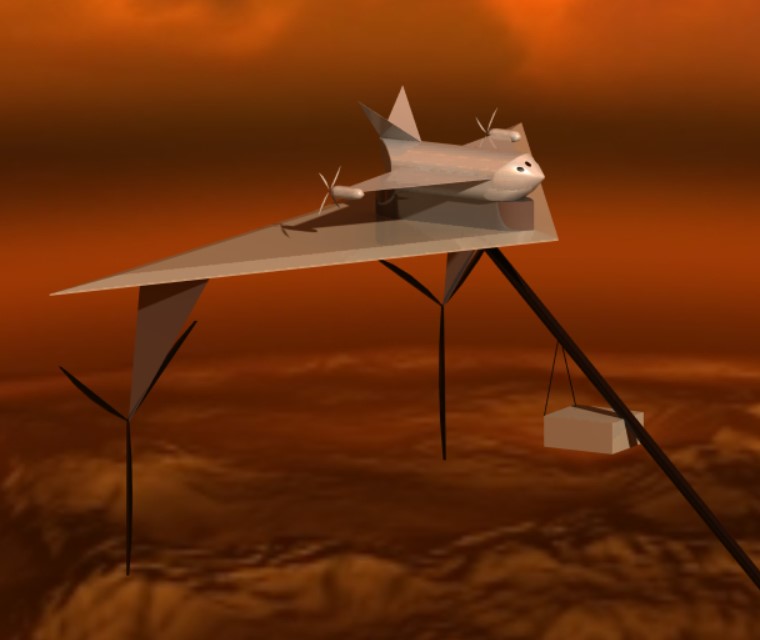Earth date: 7:12 a.m. Wednesday January 17, 2142
Venusian date: 4:55 p.m. Croday 45 advanae 61
Location: atmosphere of Venus, 55km above the surface, Babakine, Atmospheric coordinate: 0 ° N, 18 ° E
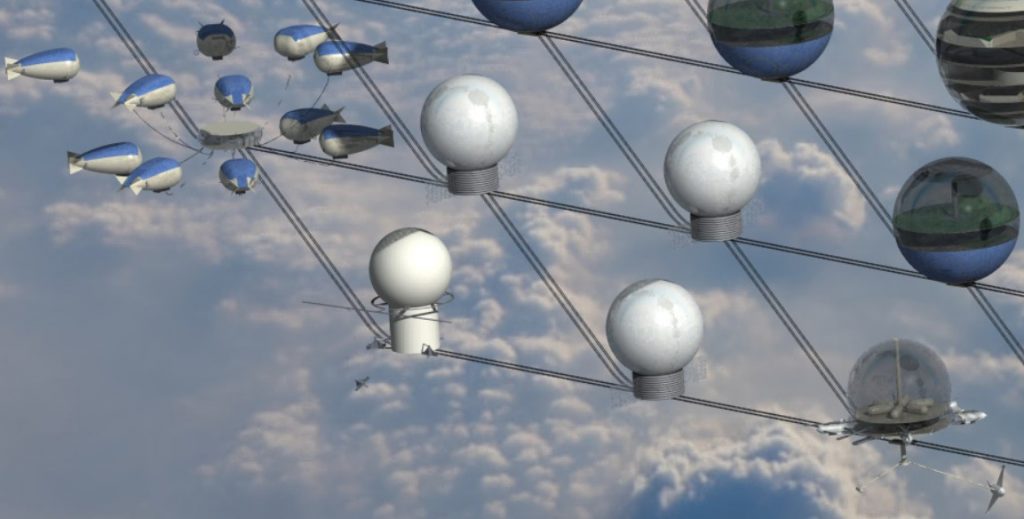
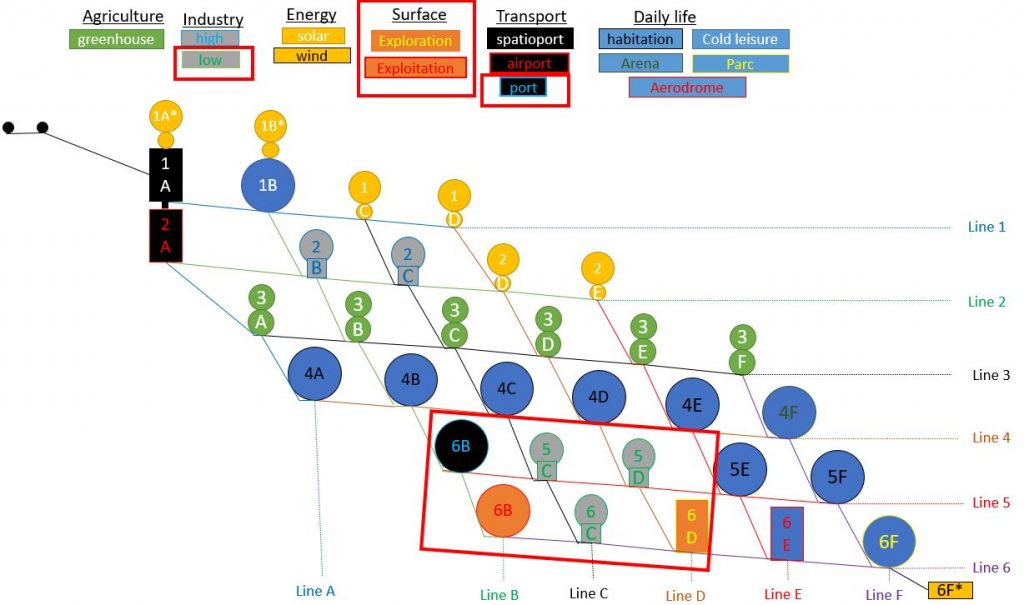
As you descend further on line B, You pass through a level made up of silver modulus. Anna explains that these are the residences in which the Babakinians live. You do not stop there because you would have the opportunity to visit it by settling in your home. First she wants to show you the lower industrial area just below. It is located at the foot of the colony because on Babakine, it is closely linked to surface mines. In addition, in these denser air layers, the balloon gallows are better allowing heavier installations. The first mods you come across is an Inter Colonial Freight Port (5B) surrounded by half a dozen transport airships like you had seen on Vesta before.
Surface exploration port (6B)
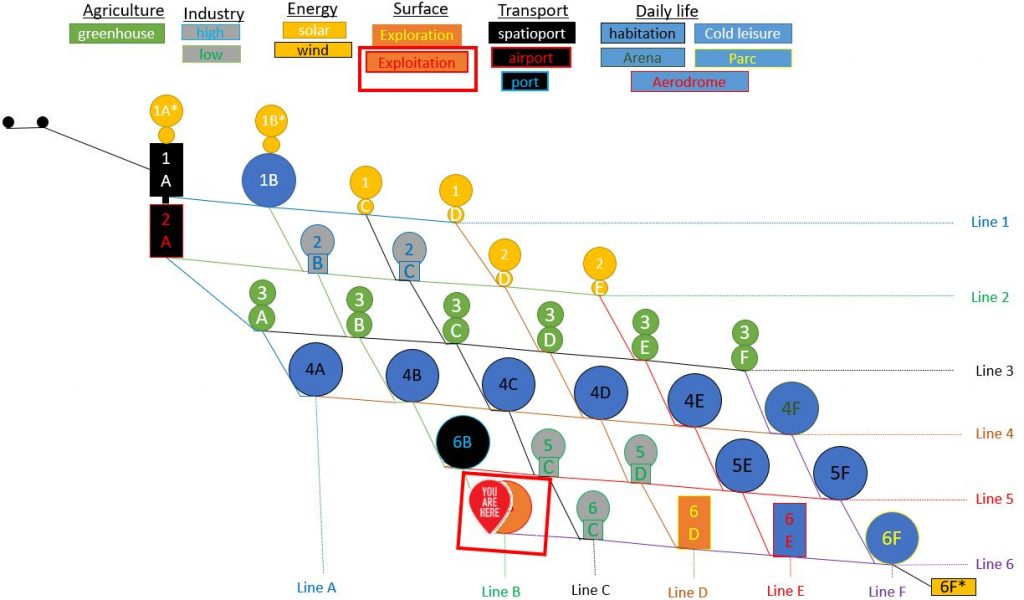
You’ve finally arrived at the lowest level of the colony in the Surface Exploration Port. This is where the scientific and mining rovers and probes are to be sent. It is also from this module that the initial operation of small mines is managed before specific infrastructure is put in place. For this purpose, the module houses hangars where surface installations are prepared before the mission and cooled after the latter. In order to handle ascents and descents, the module is designed to accommodate surface exploration vehicles that everyone here calls X-Wing because of their cross-shaped wings. In their lower part there is an unpressurized hangar where the rovers or other surface installation are securely stowed. In the upper part is a cabin where the passageways can live at a bearable pressure before returning to their diving suit. Indeed, in addition to the miner, scientist and geologist, it is also possible for the public to make surface excursions. It’s an excursion in a rigid spacesuit or in a habitable rover allows everyone to discover this environment so close but so strange. Anna tells you about her numerous surface expeditions, the faint reddish light that illuminates rocky environments that vary widely but are always distorted by the density of CO2. You would have the opportunity to make surface descents during your stay on Venus and Anna sells you the beauty of the landscapes of Aphrodite terra.
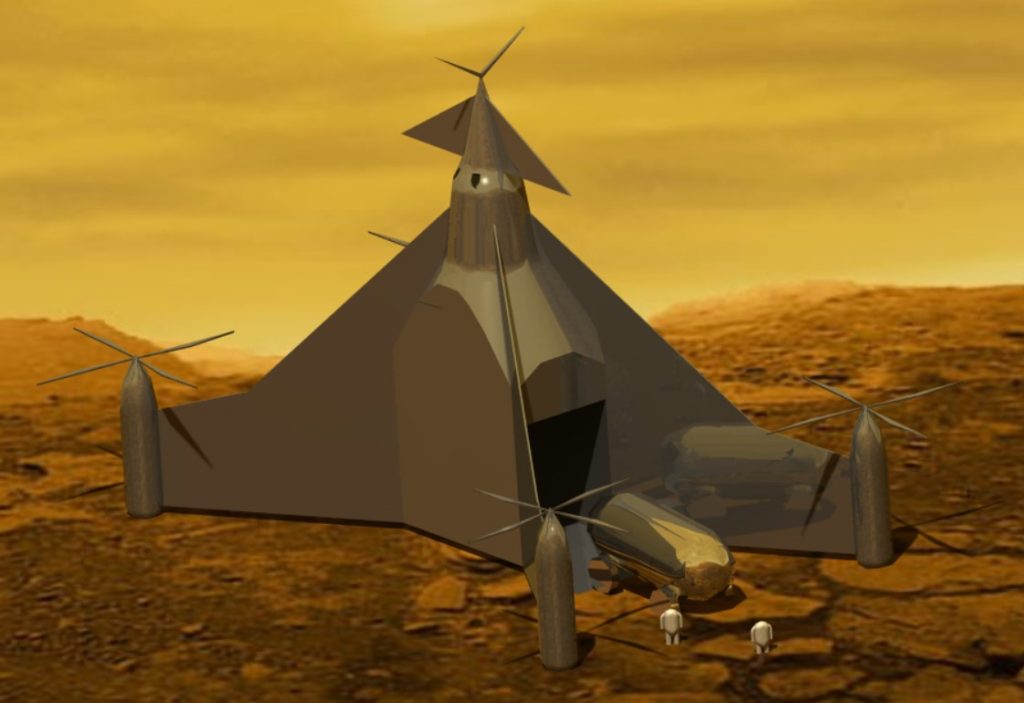
Thanks to the density of the air on the surface, the rotors placed at the end of the wings of the X-Wing are sufficient to allow a hovering flight and a vertical landing like a helicopter. On the other hand, to reach the colony’s altitude, it must move horizontally (hence the need to stow the cargo) using the lift of its wings like an airplane. Anna suggests that you wait a few minutes because an aircraft is approaching. Arrived at low speed, he begins by grabbing a trapezoid with the Y placed on his nose. By reversing the thrust of the motors, it slows down quickly enough to stop before the wagon holding the trapeze reaches the end of its 400m long rail. Once suspended from the trapeze, the latter retracts and its cart brings it back to the exploration port. Finally, it imprints a circular rail around the port to place the X-Wing on a side platform.
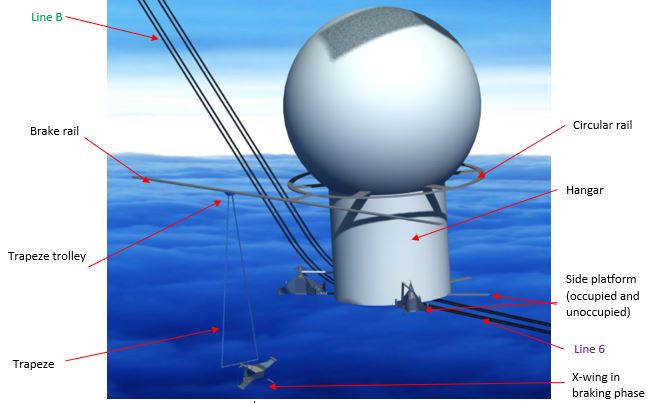
Low industrial areas (5C, 5D, 6C)
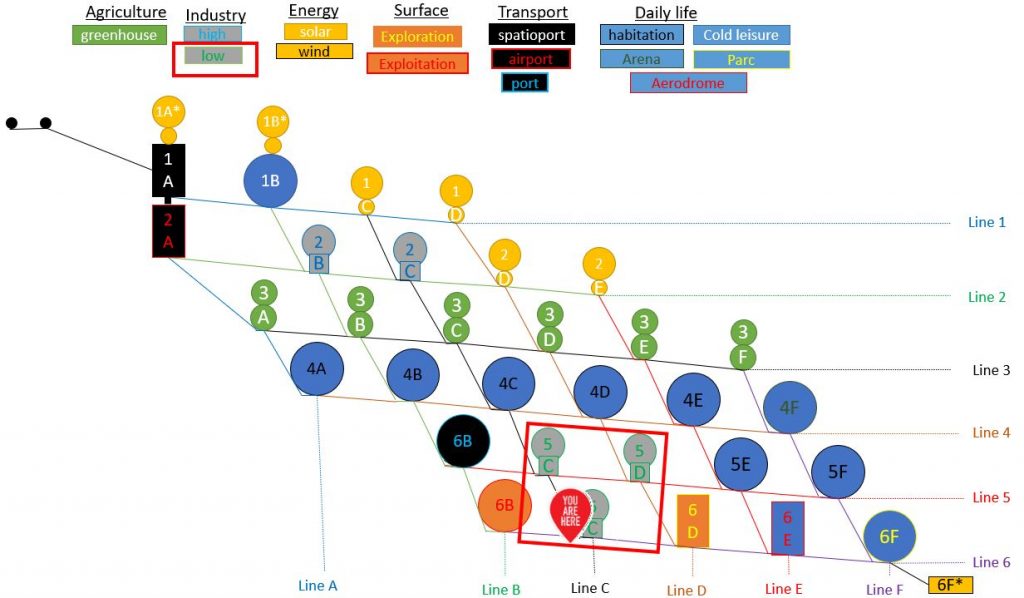
At the end of line B, you switch to line 6 which runs at the bottom of the colony. Continuing EAST, you begin by going under an industrial module. There are two more on line 5, just above. Placed in the dense layers of the atmosphere, their lift is better and allows the installation of heavier installations than tall factories. Here, the industry is mainly oriented towards metallurgy with the production of raw ingot exported to other colonies or transformed into metal parts. From Babakine’s mining specialty, this is where Venus’s most famous surface equipment is produced. For simple tasks fully mechanical rovers without pressurized compartment or thermal insulation work perfectly with mechanical computers reprogrammed for each use.

For more complex tasks or habitable rover, it is necessary to produce hulls that are extremely resistant but also thermally insulated. The most commonly used solution is a double hull between which the vacuum is made to prevent transfer by convection. This insulation is supplemented by means of broken radiation transfers. This makes it possible to make the flow of heat from the outside almost non-existent. However, the release of heat from internal components (engine, computer, passengers, etc.) cannot be evacuated and risks causing the rover or the installation to overheat. This is why the equipment must either be reassembled regularly to be cooled in the colony or equipped with a cooling system for the larger ones.
Port d’exploitation de surface (6D)
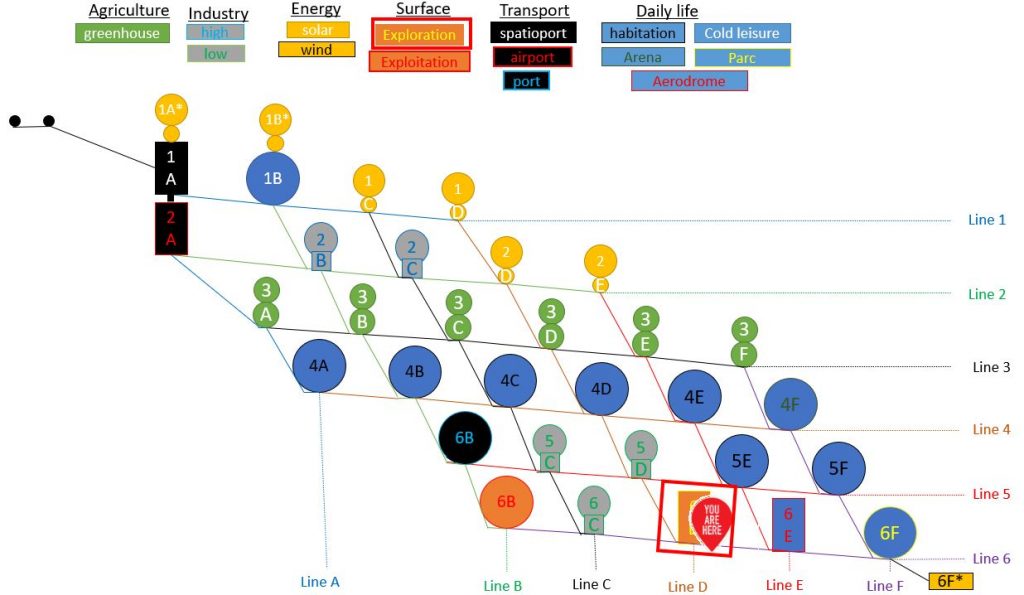
Refueling is provided by the operating module under which you have been passing. It consists of a main bubble in which there are various facilities for the maintenance of the equipment as well as the processing and cooling of the ore that has just arrived from the surface. Underneath is a launch arm and airport-like docking docks. The airplanes attached to them are often called swallow due to their large wings. These swallows are intended for transporting mine personnel in a pressurized cabin that protects them from the temperature and pressure conditions of the lower layers of the atmosphere. The rest of the fuselage is occupied by an unpressurized hold for the transport of material and especially ores.
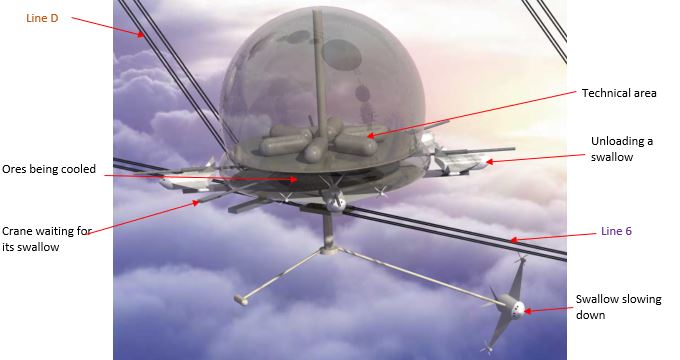
The swallows take off and make their way to the surface operating port much like a passenger jet flies to a Venusian airport. However, to reach the mines, it moored at the attached hovering station. These stations are installed on all major mines. It takes the form of huge kites located at an altitude of ten km. They are connected to the mine by a cable on which a cable car runs carrying personnel, equipment and minerals. A heat transfer fluid also circulates in the cable which makes it possible to maintain the temperature of the surface installations at a livable level thanks to a cooling unit which benefits from a more lenient temperature (350 ° C against 500 ° C on the surface). The energy for this cooling unit as well as all surface installations are supplied day and night by the planing station’s wind turbines. Indeed, unlike the colony which rotates with the atmosphere, the hovering station is bound to the surface. It therefore experiences a permanent wind of 90km / h at this altitude due to the super-rotation of the atmosphere. Combined with an air density of around 30kg / m3 (due to pressure), this wind is enough to make a swallow fly. It can therefore land on the hovering station’s docking door with no relative speed, like an air-to-air refueling in which the fighter and the tanker fly at the same speed.
